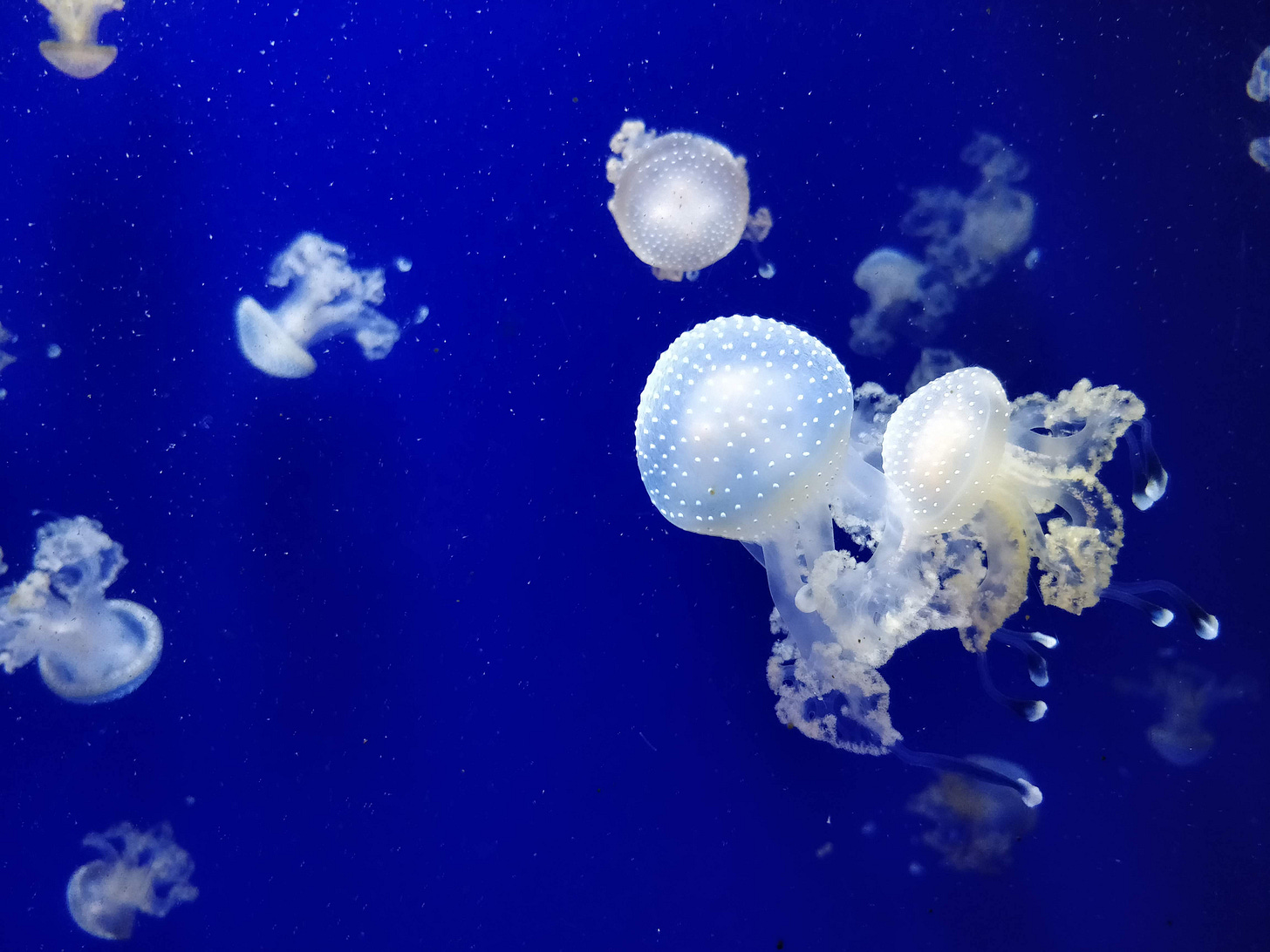Kelp! I need somebody.....
A newsletter about food systems, climate change and everything connected to them
Forget quinoa. Seaweed is the real deal. There are many different types - kombu, wakame, nori, just to name three; they are nutritious; they are also delicious - we actually love wakame salad as well as flavoured sheets of nori; and last, but not the least, they are, according to many scientists, great for the environment.
This is because they can store vast amounts of carbon and they are super versatile. They can be used as food for humans and feed for animals, as well as fertiliser and even a biofuel source.
So this week, I’m sharing a few very interesting tidbits on all thing seaweed plus other quirky stuff that caught my attention.
Making cows less gassy
Putting a little bit of seaweed to cow feed could reduce methane emissions from cattle by more than 80%, said a study from University of California, Davis that came out last week.
The researchers divided 21 beef cattle into three groups and added different amounts of red seaweed into their diets over the course of five months and tracked their weight gain and methane emissions. Those that consumed doses of about 80 grams (3 ounces) of seaweed gained the same amount of weight but burped much less methane.
The same researchers tested seaweed’s potential to reduce methane emissions in dairy cattle back in 2018. You can find the latest study in full here but if you can’t be bothered with a long, technical paper, you can read The Guardian article instead.
There are obviously questions over sample size and the duration of the study, as well as the kind of message that could be construed from these results. If people take this to mean we can eat as much beef as we want as long as they were raised on a bit of seaweed, well, that’s not really a solution.
Kelp-powered planes, trains and automobiles?
This study, from University of Southern California, looks into whether kelp can replace the usual biofuel crops such as corn, canola and soybean which compete with food crops for increasingly scarce resources like fresh water and agricultural land.
Scientists worked with a private company, Marine BioEnergy, to grow giant kelp using a kelp elevator made of fiberglass tubes and stainless-steel cables that could bring them up during the day to soak up the sun and lower it to about 260 feet at night to absorb nitrate and phosphate in the deeper water.
Apparently these kelp grew much faster than the control group, producing four times the biomass. They estimated that it would take a Utah-sized patch of ocean to make enough kelp biofuel to replace 10% of the liquid petroleum consumed annually in the U.S. and one Utah would take up only 0.13% of the total Pacific Ocean.
Will this take off? It’ll be interesting to see! Here’s a short YouTube video on some of the findings.
Can kelp save the planet?
One of our favourite podcasts - How to Save a Planet - recently devoted two episodes to kelp farming and its potential to mitigate and adapt to climate change in February. They are really fun episodes, particularly when the team tried to use seaweed flour to make scones.
Here’s Part 1 of the episode.
And this is Part 2.
Other seaweed-y stuff
If you still have more appetite for seaweed, here’s another piece worth reading, because as is often the case, there are things to consider whenever we plan anything large-scale. If we want to take advantage of seawood’s potential to rein in climate change, then we are talking about farming it at industrial scale and this paper looks at potential environmental risks and what can be done to minimise them.
Fun fact - kombu and wakame are part of the kelp family and here are a few more you can eat, courtesy of the Michelin Guide.
Aquaculture - friend or foe?
Sticking with the underwater theme, here is a 20-year retrospective review of global aquaculture published this week in Nature.
It is led by Rosamond Naylor, Stanford professor and Founding Director of the university’s Center on Food Security and the Environment. She also happens to be a pioneer in analysing aquaculture’s impact on ecosystems and fish stocks. Her work has been responsible for pushing the industry to take up more sustainable practices.
Aquaculture has been the fastest expanding food production sector globally for the last 50 years, growing at an average of 5.3% per year since the turn of the century, according to the U.N. food agency FAO.
This new paper recognises aquaculture’s crucial role in feeding people because most fish farming focuses on the species people can afford and the introduction of more sustainable practices, particularly in reducing the ratio of fishmeal and fish oil in fish feed.
But there needs to be better management of antimicrobial use in fish farming to prevent the development of drug-resistant microbes, regulation of marine farm sites, and incentives for sustainably designed systems to prevent cross-contamination between fish waste and surrounding waters, the paper said.
Naylor lays out some of the progresses and the challenges ahead in this short video.
A literal blue steak
A friend said this is a trend that is unlikely to take off and I agree with her, but it’s still a fun story to read. Charles Spence, a professor at the University of Oxford, asks if colouring our steak blue could help reduce the world’s insatiable demands for meat.
I genuinely do not have an answer, but I do like the pun he uses.
“Perhaps it is high time that we stop dying because of our desire for food color and instead start dyeing our foods to help nudge us consumers sensorially toward healthier eating behaviors.”
Funky foods in cool packaging
This fun piece in the New York Times looks at how foods from afar - like the super grain fonio from West Africa, a creamy yogurtlike product from Kazakhstan, and sweet jams from Indonesian - are being marketed to American consumers through eye-catching designs and packaging.
Full disclosure - I’m a big fan of Pierre Thiam and his fonio products, after tasting them at a Slow Food Terra Madre event in Torino in 2018.
WRI Cool Food Pledge
As corporations slowly start to imagine reopening their offices later this year and restaurants dream of a day to welcome back diners, the World Resources Institute is urging workplace canteens, school cafeterias and restaurants to consider offering more climate-friendly menus., because producing beef uses 20 times the land and generates 20 times the greenhouse gases as beans.
In a new blog post, WRI researchers said new data from the Cool Food Pledge — a group of restaurants, cities, hospitals and companies that have committed to cutting greenhouse gas emissions associated with the food they serve by 25% by 2030, in line with Paris Agreement goals — show the efforts does not have to be painful.
For example, biotech company Genentech, with 10,000 staff in California, changed their chef specials to plant-rich options, like “Vegan Jackfruit, Okra and Seitan Jambalaya” and “Charred Yucatan Vegetables”. From 2018 to 2019, in addition to positive staff response, the company also reduced the climate impact of each plate of food they serve by 33%, WRI said.
In total, Cool Food Pledge members were able to collectively reduce emissions by 4.6% overall and by 12% per plate in just four years, it added.
As always, have a great weekend! Please feel free to share this post and send tips and thoughts on twitter @thinink, to my LinkedIn page or via e-mail thin@thin-ink.net.



